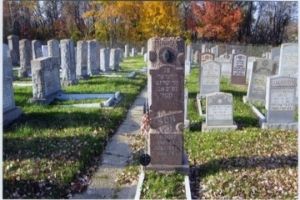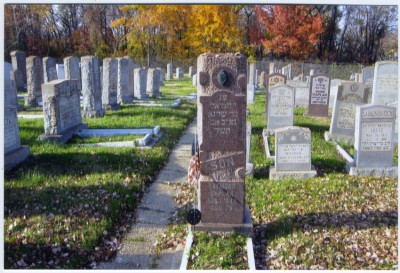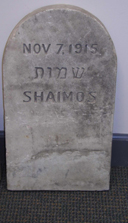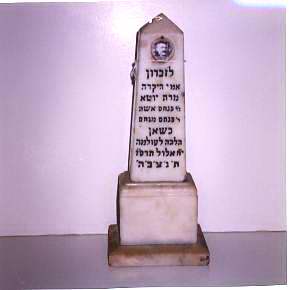Historic Graveyard Preservation

 Hello, my name is Stephanie Daugherty and I am the summer collections intern at the Jewish Museum of Maryland. I am currently finishing my Master’s in Museum Professions at Seton Hall University in South Orange, New Jersey. In addition to my internship, I am also completing my thesis this summer on historic graveyard preservation, which covers maintaining cemeteries and caring for tombstones in a museum collection.
Hello, my name is Stephanie Daugherty and I am the summer collections intern at the Jewish Museum of Maryland. I am currently finishing my Master’s in Museum Professions at Seton Hall University in South Orange, New Jersey. In addition to my internship, I am also completing my thesis this summer on historic graveyard preservation, which covers maintaining cemeteries and caring for tombstones in a museum collection.

Although often disregarded as spooky, early American burying grounds are important places of historical information. Gravestones are notable examples of material culture serving as a physical record of a community’s former inhabitants. Gravestones can provide insight to the beliefs, customs, and status of the people who erected them. These artifacts look out on us much like they did on the people of the eighteenth, nineteenth, and twentieth centuries. From forgotten family burying grounds to systematic memorial parks, cemeteries are exceptional repositories of local history.

I was very excited to learn that the Jewish Museum of Maryland houses numerous photographs of Jewish cemeteries and preserves dislodged tombstones in its collection. In the nineteenth century, a large influx of Jewish immigrants came to the United States and established cemeteries. Jewish cemeteries display unique characteristics that set them apart from other American graveyards. For instance, many Jewish cemeteries have gravestones crowded next to each other so there is hardly room to work around each stone. Marble and granite are the most common materials and often include symbols of the Star of David, the Lion of Judah, menorahs, etc. Enameled portraits on the tombstone and inscriptions in Hebrew and Yiddish are other distinct features.

While cemeteries and tombstones provide a wealth of knowledge, many are in deplorable condition. Acid rain has eroded many markers to such a degree that their inscription is no longer legible. Some cemeteries are overgrown and forgotten while others suffer from vandalism. The goal of my thesis is to explore the value of studying cemeteries and describe how we can preserve them for future generations. I am excited to include what I have learned from the Jewish Museum of Maryland in my thesis.

1 reply on “Historic Graveyard Preservation”
I don’t know who is the appropriate person to contact regarding my concern. Perhaps you can direct me in the right direction. Several months ago, my husband and I tried to locate the grave/tombstone of my husband’s grandfather who was buried in Adath Yeshurun Cemetery which is part of the Herring Run Cemeteries. To say that it was in deplorable condition would be an understatement. It was so overgrown with weeds that I feared walking through the brush thinking that there could be snakes or other undesirable animals in the undergrowth. Stones were overturned and broken. Markers were not visible. I could go on and on, but I’m sure you get the point. Obviously we could not locate the family member’s gravesite. If you could refer me to a person who could address this situation, I would be grateful. Thank you.